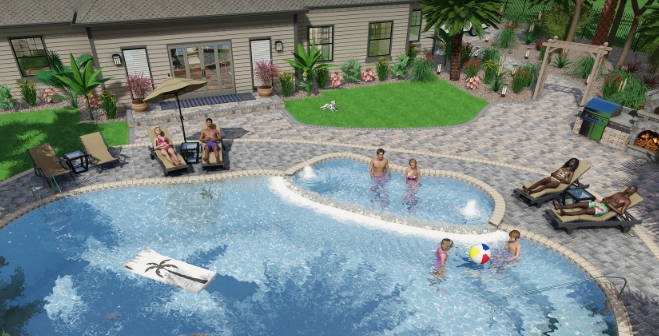Real-time landscape architecture is a dynamic and exciting field that blends technology with nature, allowing designers to create spaces that are not only beautiful but also responsive to the needs of the environment and the people who use them. As we ventured into 2020, innovative tools and techniques emerged to enhance how landscape architects visualize, plan, and implement projects. This article explores the relevance and application of real-time landscape architecture.
The Importance of Real-Time Visualization
In the fast-paced world of landscape design, real-time visualization has become a game-changer. Using advanced software, landscape architects can create immersive 3D models that respond instantly to changes in design. Clients can see their projects come to life before construction begins, allowing for informed decisions and adjustments on the fly. This not only saves time but also enhances collaboration between architects, clients, and other stakeholders. By making changes in real time, designers can ensure that the final product aligns more closely with the client’s vision and requirements.
Sustainable Practices in Real-Time Design
Sustainability is at the forefront of modern architecture, and real-time landscape architecture plays a crucial role in promoting eco-friendly practices. Technologies such as Geographic Information Systems (GIS) and environmental modeling are integrated into the design process, helping architects assess the environmental impact of their projects promptly. By simulating different scenarios, designers can choose materials and layouts that reduce carbon footprints and enhance biodiversity. This holistic approach ensures that landscapes are not only attractive but also beneficial to the ecosystem.
Community Engagement Through Interactive Tools
One of the most exciting aspects of real-time landscape architecture is the ability to engage communities directly in the design process. Through interactive tools and virtual reality experiences, community members can contribute ideas and feedback on proposed projects. This participatory approach fosters a sense of ownership and pride among residents, leading to designs that better serve the community’s needs. By incorporating input from those who use the spaces, landscape architects can create more relevant and functional environments that reflect local culture and enhance public well-being.
In conclusion, real-time landscape architecture in 2020 represents a fusion of technology, sustainability, and community engagement. By leveraging innovative tools, architects can create spaces that are not only visually stunning but also practical and environmentally responsible. If you’re interested in learning more about how real-time techniques can benefit landscape design, consider exploring various tools and resources available in this ever-evolving field. Your next project could be just a click away!

